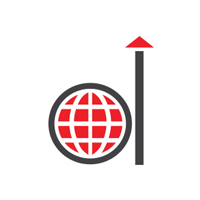The healthcare sector is reeling under the pressure of optimizing clinical workflows, reducing healthcare costs, improving operational efficiency, managing human resources, and striving to improve patient treatment and outcomes. It is anticipated that the strain on healthcare systems will increase manifold in the coming years, particularly in light of data published by AAMC.
The Association of American Medical Colleges (AAMC) findings report that the United States will face a sharp shortage of nearly 124,000 physicians by 2034, including a primary care physician shortage of between 17,800-48,000 and non-primary care specialty physicians shortage of between 21,000-77,100. Burnout, the aging population, and other factors play a major role in driving registered nurses to take up other roles. Furthermore, CTOs, CIOs, and other decision-makers need to make quick and actionable decisions from the large volumes of data generated by healthcare institutions from electronic health records (EHR), CRM, labs, pharmacy reports, outpatient registrations, patient billing, claims, memberships, and hospital management systems.
How a Revamped Data Mining App Optimized Supply Chain
Despite struggling with a multitude of challenges, BI and Data Analytics capabilities may help healthcare institutions extract meaningful insights from vast amounts of data produced to overcome the issues they are dealing with. In other words, the transformative potential of BI and Data Analytics in healthcare cannot be overlooked, as it holds the key to bridging operational gaps, optimizing patient care, and staying competitive and agile. Although there is an array of data analytics tools out there that allow healthcare institutions to make the most of their clinical and operational data, Power BI has emerged as a robust ally, empowering CTOs, CIOs, and other decision-makers with the capabilities they need to unlock the true potential of data in the ever-evolving landscape of healthcare. Now, let’s dig deeper into the applications of Power BI disrupting the healthcare industry.
1. Predictive Analytics for Proactive Healthcare
Hindsight is no longer enough in the dynamic data-driven healthcare realm. In fact, it becomes increasingly critical for healthcare practitioners to anticipate patient needs. Its Machine Learning capabilities offer a glimpse into the future by allowing healthcare institutions to build predictive models to accurately predict disease outbreaks, patient volumes, and resource demands. This data-driven approach improves strategic planning, optimizes resource allocation, and enhances organizational readiness to respond to emerging challenges leading to proactively healthcare service delivery.
2. Real-time Data Insights
In the healthcare landscape, real-time data insights play a critical role in timely decision-making. Its interactive reports and visually-rich dashboards provide real-time data insights, enabling decision-makers to analyze KPIs and other crucial parameters to respond promptly to emerging challenges or opportunities. This level of responsiveness and agility optimizes resource allocation, improves patient care, and empowers healthcare organizations to stay agile in an ever-changing environment.
How to Use Power BI for Data Visualization and Analysis
3. Operational Efficiency and Cost Optimization
Today, a large number of healthcare organizations are struggling to strike a balance between optimizing costs and delivering exceptional patient care. It empowers CTOs, CIOs, and decision-makers to identify operational inefficiencies and analyze cost drivers through predictive modeling, data analytics, and visualization. By identifying the key areas of improvement, such as revenue generation, workflow optimization, and resource utilization, decision-makers can implement data-backed strategies to allocate resources more effectively, streamline processes, and achieve significant cost savings.
4. Centralizing and Streamlining Data
As stated above, the healthcare industry produces large volumes of data from disparate sources, including medical imaging systems, patient surveys, electronic health records, financial records, and more. For CIOs, CTO, and decision-makers, analyzing this unstructured data efficiently becomes a nerve-wracking task. The challenge lies in transforming this raw and unstructured data to make it accessible, actionable, and reliable. With its help, healthcare institutions can not only collect and collate data at a centralized place but also present it in the form of intuitive and interactive reports and real-time dashboards. By centralizing and streamlining data from various sources, decision-makers can gain a holistic view of their operations, which in turn, enables them to discover hidden trends, patterns, and opportunities for actionable decision-making.
How Businesses Make Data-driven Decisions with Power BI
5. Regulatory Compliance and Data Security
Regulatory compliance and stringent data security are paramount in the healthcare sector, where privacy and patient confidentiality are sacrosanct. Its adherence to compliance standards and robust security measures allow healthcare institutions to confidently store, process, and share sensitive patient data in a compliant manner. With advanced features like data encryption and role-based access control, healthcare institutions can ensure that sensitive patient data is not only protected from unauthorized access but also conform to HIPAA and other industry-specific regulations. This level of data security and adherence to regulatory compliance builds unparalleled trust among stakeholders, patients, and regulatory bodies, which in turn, fosters a robust healthcare environment.
Summing Up
The future of the healthcare industry lies in data-driven decision-making, and Power BI has emerged as a disruptive BI and analytics tool empowering CTOs, CIOs, and other decision-makers to unlock the potential of their data. Power BI with its predictive analytics, real-time insights, cost optimization, and compliance features enables healthcare institutions to stay agile and competitive in an ever-evolving landscape. As the healthcare industry continues to evolve, embracing Power BI can be a key driver to navigate the challenges and opportunities whilst achieving excellence in operational efficiency, improving patient care, and driving sustainable growth.
Case in Focus
A leading healthcare organization based out of Texas collecting and storing data in disparate systems, leading to delayed decision-making, increased likelihood of errors, and hindered comprehensive analysis. The lack of a unified BI and Data Analytics platform resulted in missed opportunities to discover hidden patterns, trends, and areas for improvement. The client partnered with Damco Solutions and sought end-to-end consultation pertaining to their challenges. Based on the consultation, the client implemented the Power BI solution, which in turn, enabled data-driven decision-making, improved operational efficiency by 45%, and optimized resource allocation by 27%.





